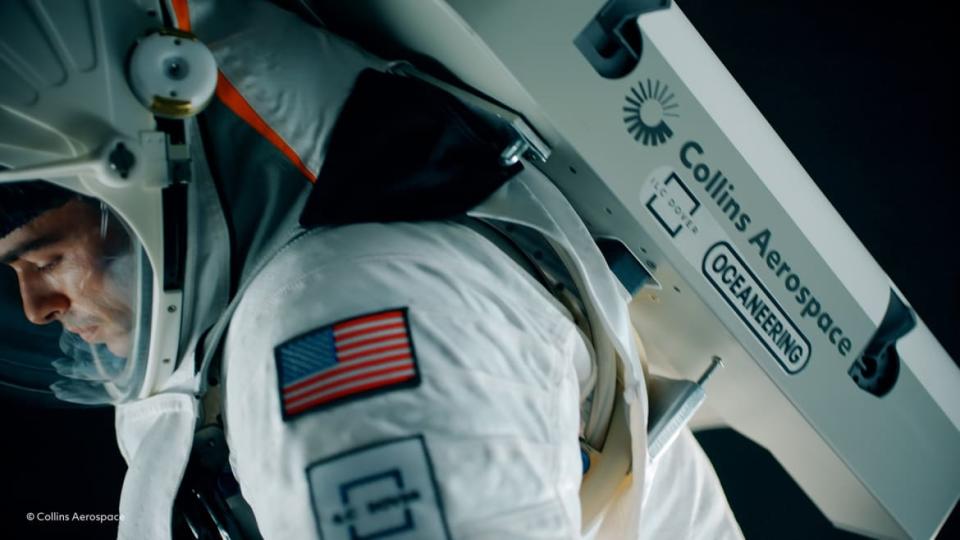NASA’s New Spacesuit Contract Is a Big, Fat Expensive Gamble

NASA astronauts are getting a major wardrobe makeover.
The agency announced on Wednesday that it has chosen Axiom Space and Collins Aerospace to build its next generation of spacesuits to be used in the Artemis missions to the moon and those still set to go to the International Space Station. The companies were selected as a part of the Exploration Extravehicular Activity contract solicitation, which awards the companies a potential $3.5 billion based on the products and services they provide through 2034.
The suit is expected to facilitate exploration on the surface of the moon, as well as spacewalks outside of spacecraft orbiting the Earth and the moon. NASA is currently aiming for the suits to be ready by the Artemis 3 mission currently slated for 2025—poised to be the return of astronauts to the lunar surface for the first time in 50 years The agency also said that the two companies will also be helping develop spacesuits for future crewed missions to Mars (though timeline on that is still TBD).
The announcement is yet another sign that the agency is making big bets on private entities to provide the hardware that will be necessary for its next era in space.

Collins Aerospace was one of the two companies chosen to build NASA's new spacesuits.
“This is a historic day for us. History will be made with these suits when we get to the moon,” Vanessa Wyche, director of NASA’s Johnson Space Center, said at a press conference on Wednesday, referencing the first woman and first person of color who will set foot on the lunar surface as part of the Artemis missions.
NASA’s current spacesuits are insufficient for lunar missions. The agency needs something that is capable of withstanding the harsh conditions of the moon’s surface, especially for astronauts tasked with explorations of the south lunar pole—one of the coldest areas of the entire solar system. They need to provide a blend of mobility as well as proper protection against the jagged moon rocks and dust. The suit also needs to be built with the goal of long-term colonization and exploration efforts in mind.
The new suits will be replacing NASA’s arguably decrepit 40-year-old suits currently being used aboard the ISS. On March 23, the agency put a pause on spacewalks after a German astronaut Matthias Maurer reported water leaking into his helmet during a mission—potentially coming from the suit’s water-cooling system. While the agency reported that the issue posed no danger to Maurer, the event underscored what NASA has known for years: Its spacesuits are woefully outdated.
Space Tourism Is Betting Its Future on a Crew of Billionaires
In fact, a 2017 report from the agency’s Office of the Inspector General found that not only were the current stock of suits incredibly old, NASA was also running out of them. The report found that the ISS only had 11 mission-ready suits aboard. What suits are available have an “expiration date” that was extended to 2028—though recent helmet leaks might shorten that by a number of years.
NASA initially announced a new prototype suit back in 2019 for both the ISS and the Artemis missions. However, the suit was delayed last year due to funding shortfalls.
Fascinatingly, though, the agency was scant on details during the press conference about what exactly they expect from the two companies in terms of the spacesuit itself. The contract stipulates “indefinite delivery and indefinite quantity, milestone-based” award system, according to an agency press release. That means there’s no set quantity or specific mission these suits will be used.
Here’s the NASA Backpack That Will Keep Astronauts Alive on the Moon
Lara Kearney, manager of the Extravehicular Activity and Human Surface Mobility Program at NASA, said at the press conference that there would be a demonstration to show the capabilities of the spacesuits “in the next year or two.” But she added that the agency would be leaving the stipulations of the demonstration up to the two companies, saying it “could be on the space station” or “lunar simulating environments on the ground.” That’s a whole lot of leash given to two private companies with billions of dollars on the line.
“We have some requirements ourselves,” Michale Suffrendini, Axiom Space CEO, said at the press conference. He later added that, “Each company has to own the design and own the integrated performance and integrated safety. So with this concept, we now have to go back and certify under our own conditions that it performs under one piece.”
Bottom line: NASA is putting a lot of its chips on private companies to build these suits on mostly their own terms. The agency’s decision to hand off wardrobe duties to a private company is a solid signal that it’s looking to expedite the process in order to reach its ambitious goal of reaching the lunar surface by 2025. In doing so, they’re betting very big on private companies to develop their next generation of human spaceflight suits with potentially little oversight, vague benchmarks, and an astronomical price tag.
Got a tip? Send it to The Daily Beast here
Get the Daily Beast's biggest scoops and scandals delivered right to your inbox. Sign up now.
Stay informed and gain unlimited access to the Daily Beast's unmatched reporting. Subscribe now.

